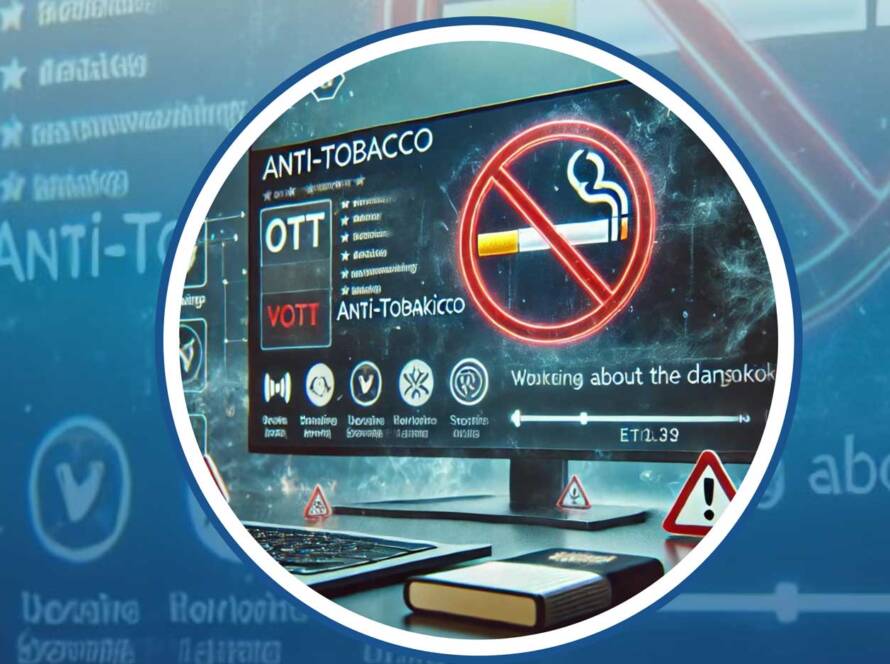Screenwriters Rights Association Of India: A Registered Copyright Society
by Anushree Rauta, Equity Partner, Ritisha Mukherjee, Principal Associate and Savan Dhameliya, Associate
Recently on 30th December, 2024, the Screenwriters Rights Association of India (SRAI) got registered by the Central Government as a copyright society for literary and dramatic works. As per the definition of ‘dramatic works’ as included in the Copyright Act, 1956 (“Act”), ‘the scenic arrangement or acting, form of which is fixed in writing or otherwise’, however excluding a cinematograph film, shall fall within the scope and ambit of a ‘dramatic work’, which shall, in turn, include screenplay of a cinematograph film. Owing to such registration, SRAI shall now be entitled to collect and distribute royalties for and on behalf of its registered members (i.e., authors and owners of literary and dramatic works and their legal heirs), for utilization by third-parties of such literary and dramatic works, such as story, script, screenplay, dialogues and other literary works, however excluding lyrics of sound recordings (“Works”). SRAI shall be further involved in issuing licenses on behalf of authors and owners of literary and dramatic works who would be their registered members, in relation to the use of their Works. The 2012 amendment of the Act inter alia laid down (a) under Section 33 that the business of granting licenses in and to copyrightable works shall be through a registered copyright society only; and (b) under section 18 that authors of literary works included in a cinematograph film shall be entitled to receive royalties to be shared on an equal basis with the owners of such copyrightable work. Accordingly, SRAI had made multiple applications in the past before the registrar of copyright for recognition as a copyright society under Section 33 of the Copyright Act, 1957 (“Act”). As per their application for registration, SRAI is looking to primarily deal in mechanical reproduction right, public performance right vide radio, television, internet streaming etc.), adaptation and translation right and synchronization right (collectively referred to as the “Rights”) in relation to the Works. While the right to receive royalties had been identified to be non-assignable and non-waivable vide the 2012 amendment of the Act, there had been no practical exercise and implementation of the right or the legislative intent till date, as no dedicated copyright society had been established to deal with the Works. As a result, the right to receive royalty in relation to the Works merely served as a right available-on-paper to the right-holders, for any agreement to the contrary would be void in furtherance to Section 18 of the Act. The recognition of SRAI as a registered copyright society is likely to have far-reaching impact on the way the industry currently functions. Until now, film producers being the owner of all literary and dramatic works contained in a cinematograph film, had the liberty to negotiate arrangements with writers/authors of the works as well as subsequent licensees. Once SRAI becomes fully functional as a copyright society and publishes a tariff scheme for various kinds of usage of the Rights as mandated under Section 33A of Act read with Rule 56 of the Copyright Rules, 2013 (“Rules”), third-party users may be required to approach SRAI to procure licenses and authorization for specific usage of the concerned works, especially if they are looking to exploit any or all of the Rights in relation to the Works. An analogy can be drawn with the functioning of the music industry, where collecting societies like Phonographic Performance Limited (PPL), Novex or copyright societies such as Recorded Music Performance Limited (RMPL) grant licenses for use and/or exploitation of sound recording rights, and Indian Performing Right Society (IPRS) collects and distributes royalties to owners and authors of the respective copyrightable works forming members of the respective societies, in equal shares, for utilization of the underlying music compositions and associated lyrics of songs. The licenses are procured from the respective copyright society (as applicable depending on the nature and manner of usage made) by the end-exploiters, i.e., the users/platforms utilizing the underlying works and/or sound recordings. For instance, platforms such as YouTube, Spotify, Amazon, Zee, etc. have licensing deals in place with copyright societies such as IPRS, which allow them to exercise the mechanical reproduction right and the public performance right in relation to the underlying works in the songs in course of their exploitation on the platform(s). Drawing a similar analogy, it is likely (while open to interpretation) that the responsibility of the royalty payment in case of the Works underlying in a cinematograph film would fall on the platforms. For instance, in case of a film streaming on Amazon Prime Video, Amazon Prime may need to pay the royalties to SRAI for utilization of the underlying Works in the content streamed on Amazon Prime, in addition to any royalties that may be payable to Cinefil, the copyright society dealing with cinematograph films, for exploitation of the entire film on the platform. Now, this would be particularly interesting as Amazon Prime has different types of revenue patterns: SVOD (subscription video on demand), TVOD (transactional video on demand), AVOD (Advertising Video on Demand), Amazon Prime Video Direct (revenue sharing model, where, basis the hours of consumption, a particular rate is applicable for the content). In such a scenario, it will have to be seen how the agreements between a platform like Amazon Prime and producers/ right-holders of the content capture the royalty component, and how SRAI establishes the tariff scheme in relation to the varied kinds of utilization and exploitation involved; as such royalty amounts would have a rippling impact on the entire chain. Rule 56 mandates that a copyright society must create a ‘Tariff Scheme’ within three months of starting its business. This tariff scheme should outline the royalties to be collected for various rights in the works managed by the society. It must specify rates based on user categories, media, exploitation types, duration, territory, and other factors; and such tariff scheme must be published on the official website of the concerned copyright society. It will therefore be of utmost importance that SRAI draws the tariff scheme in compliance with Rule 56 of the Rules and maintains absolute transparency in its functioning. The tariff scheme can be revised periodically but not earlier than a period of twelve months by following the rules, and any changes must be published on the website at least two months before they take effect. According to Rule 56 (4), the copyright society shall, while fixing the tariff, follow the guidelines issued by any Court or the Board, if any, and may consult the user groups. While the law does not make it mandatory for the copyright society to consult with user groups, the Parliamentary Standing Committee Report of 2010 [1] on the 2012 amendment of the Act acknowledged under paragraphs 17.7 and 17.8 thereof the need and necessity of such consultation with user-groups to ensure elimination of arbitrariness and arm-twisting involved in the process of tariff fixation; thereby underlining on the significance of the consultative process. On the other hand, such registration is music to the ears of the writers of the industry, as it implies that authors and owners of literary and dramatic works who shall be members of SRAI shall be entitled to receive royalties for utilization of their works. As a result, writers registered with SRAI as well as producers/assignees who own such Works shall now be entitled to derive long-term commercial benefits in equal shares, for exploitation of their works respectively in the capacity of authors and ‘assignees’ as mentioned in the Act; albeit, how such calculation, collection and disbursement of royalties shall play-out can only be determined with time, depending on how efficiently the society manages to navigate around the practical difficulties likely to ensue. It is pertinent to note that secondary payments through royalties are made to screenwriters in several jurisdictions as per laws and practices applicable locally in such territories. In Colombia, the Pepe Sánchez Law, since May 23, 2017 [2], protects the rights of screenwriters and audiovisual directors in the Colombian territory, allowing them to receive fair remuneration for public exhibition of their works. In January 2020, Uruguay passed a law recognizing screenwriters’ right to remuneration for public communication of the audiovisual work; whereby, such right is inalienable, and its management can be carried out collectively [3]. Writers in America, especially the members of Writer’s Guild of America East (WGAEast), are entitled to receive royalties in the form of ‘residuals’ defined as ‘compensation paid for the reuse of a credited writer’s work’, specifically in relation to deals that are subject to WGAEast; whereby, the writer is entitled to receive pre-determined proportions of the revenue generated from secondary market for specific usage of the work made; for example, reuse of a theatrical motion picture in free TV, pay TV, basic cable, new media (rental, streaming, ad-supported) markets, or for subsequent reruns of cable programs shall entitle writers registered with WGAEast to receive a pre-determined share of the revenues so generated from such specific exploitation [4]. Similarly, secondary royalties get generated through subsequent re-usage of the works in the territory of Australia, wherein, AWGACS collects and distributes such secondary payment on behalf of its writers and also maintains negotiated partnerships with 34 foreign collecting societies from whom they collect international secondary royalties for their members [5]. It would be interesting to note whether SRAI follows the footsteps of any foreign jurisdiction and adopts their practice for establishing a mechanism of collection and distribution of royalties or assumes an original approach to introduce a fresh perspective.



